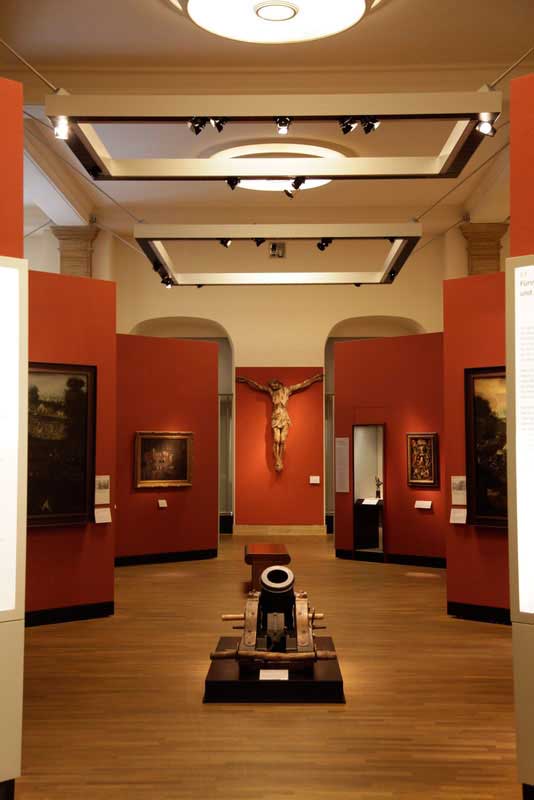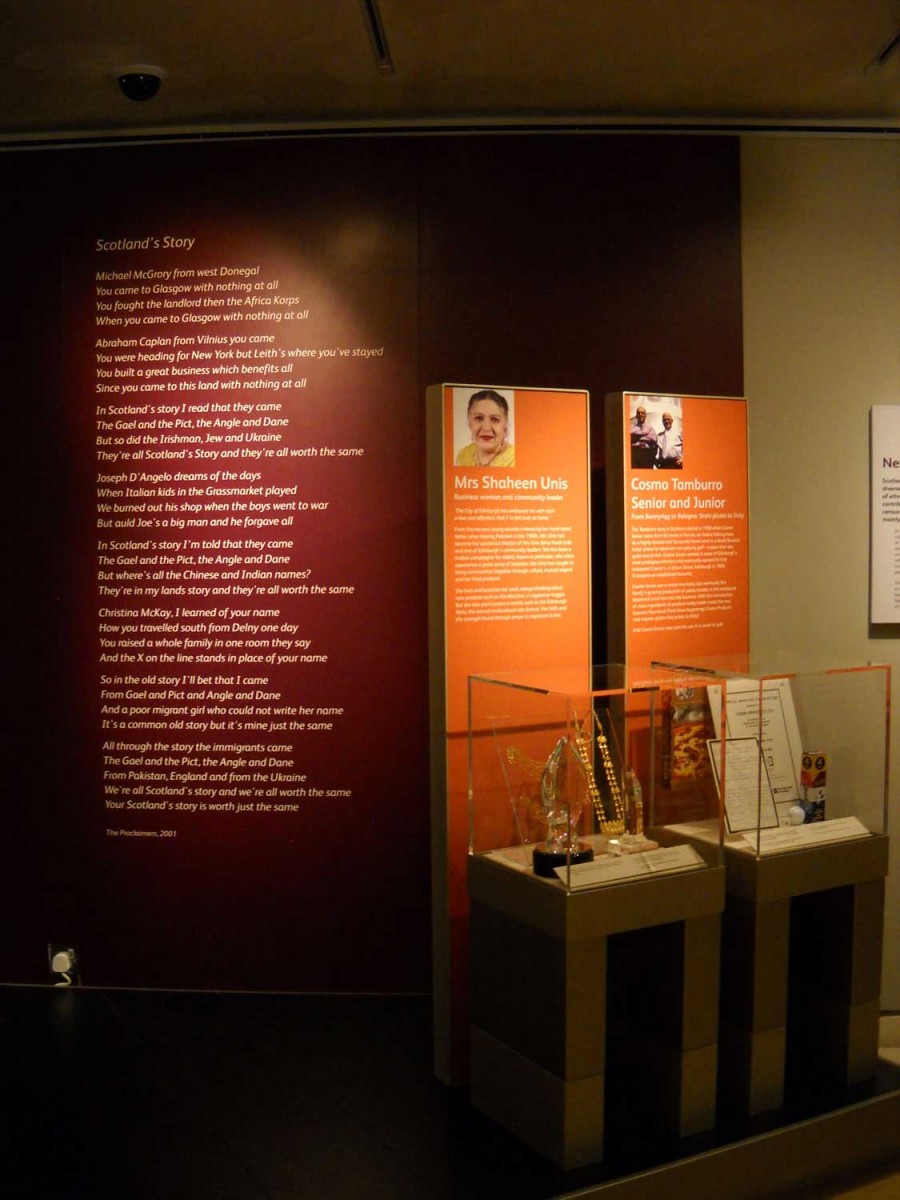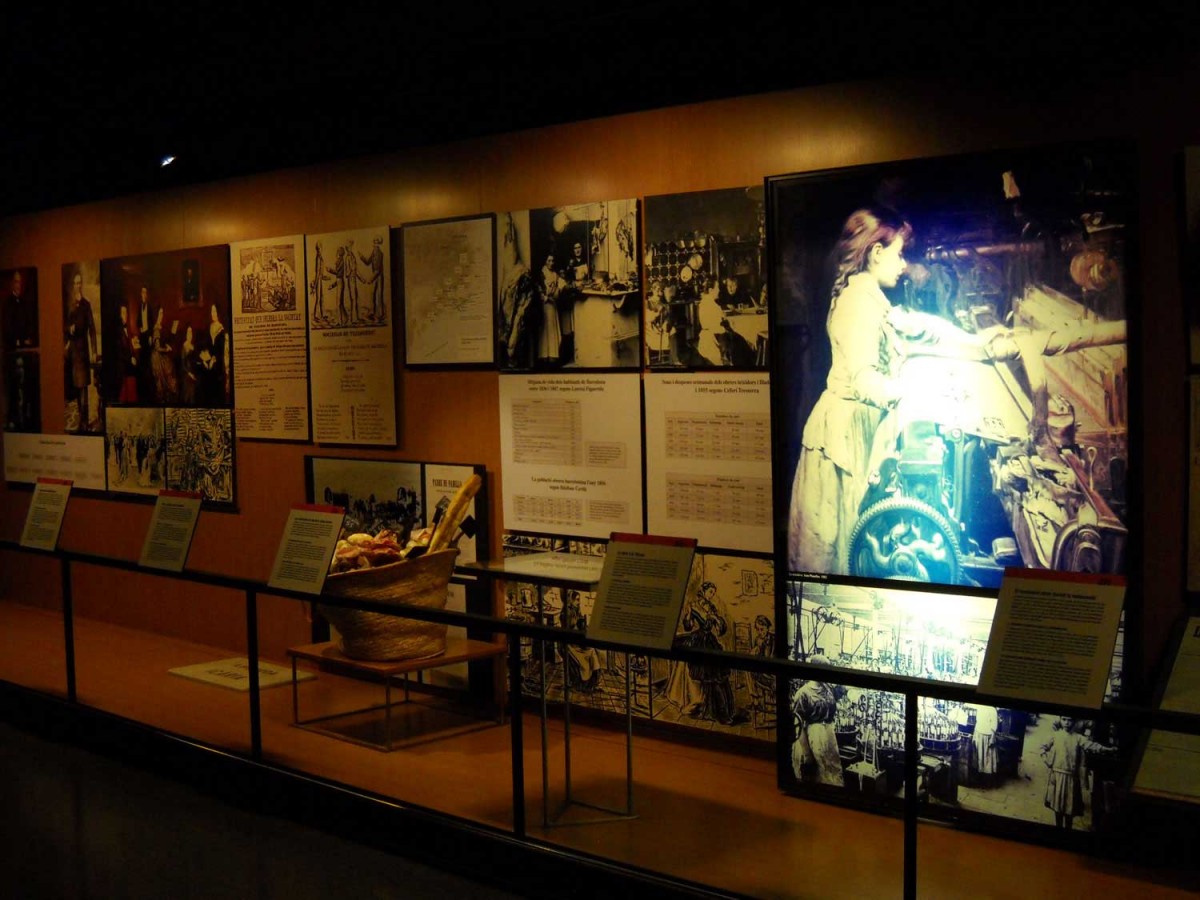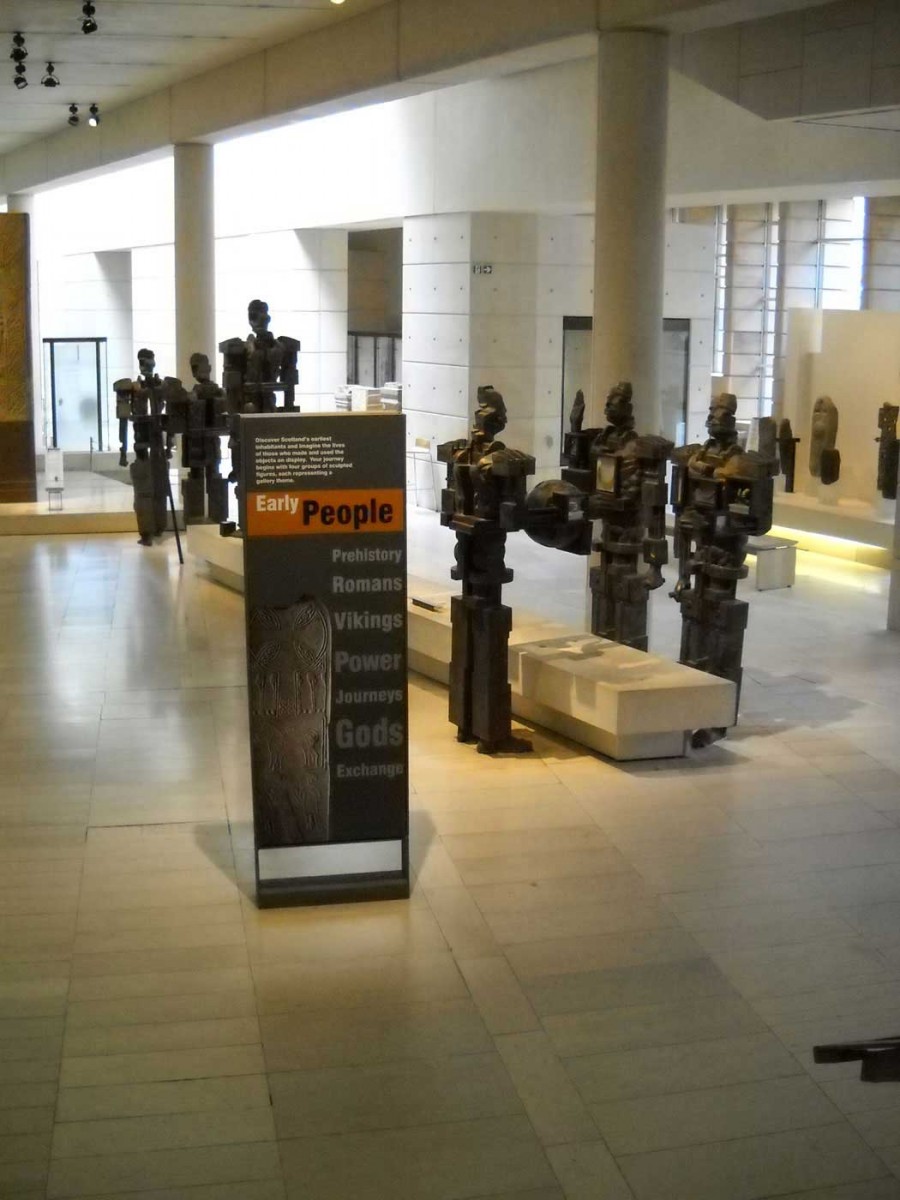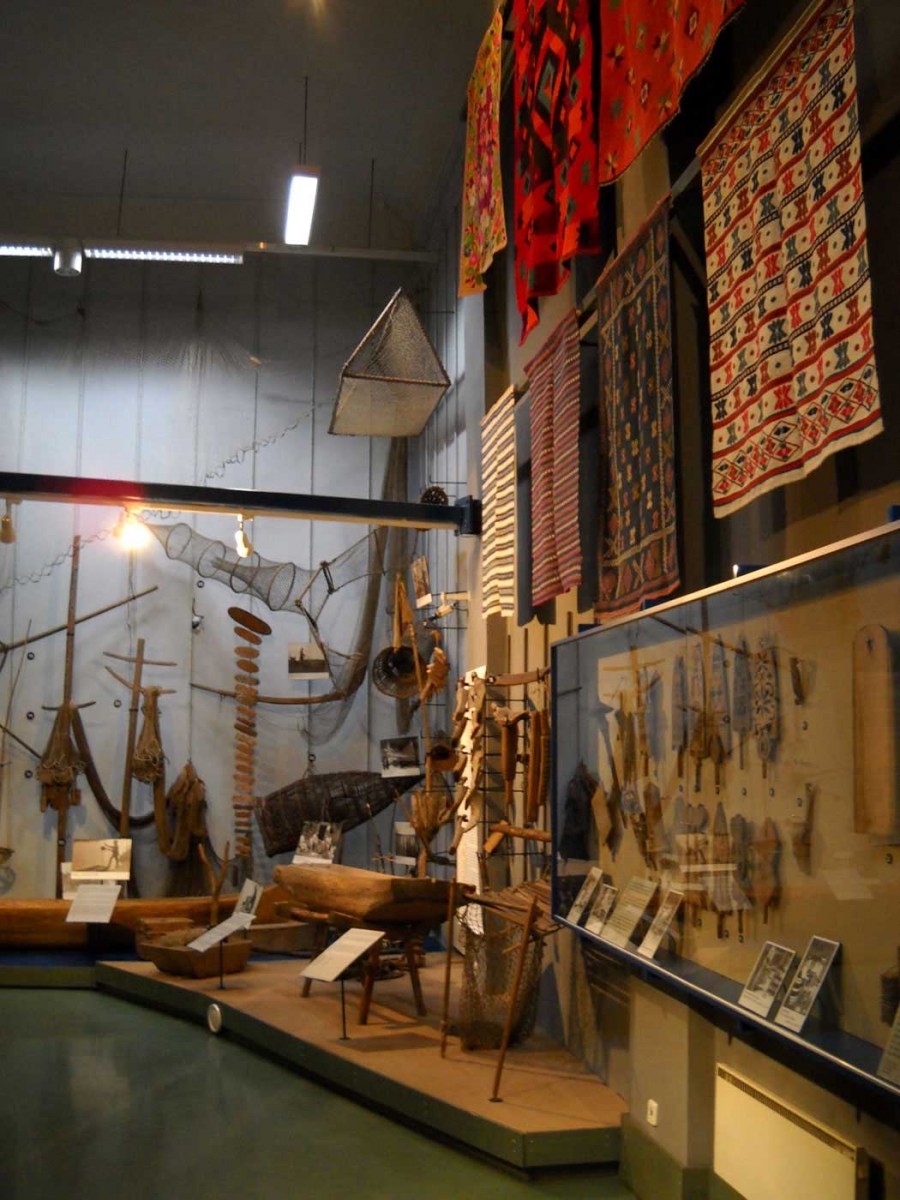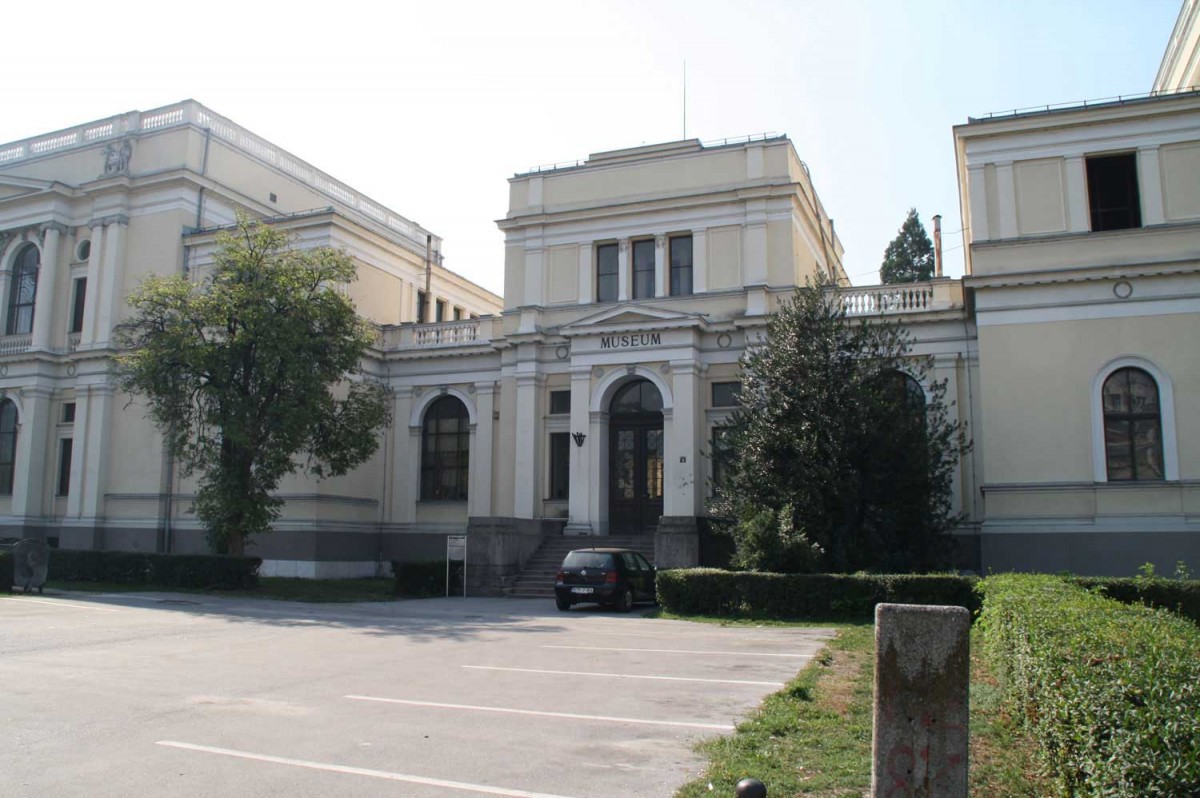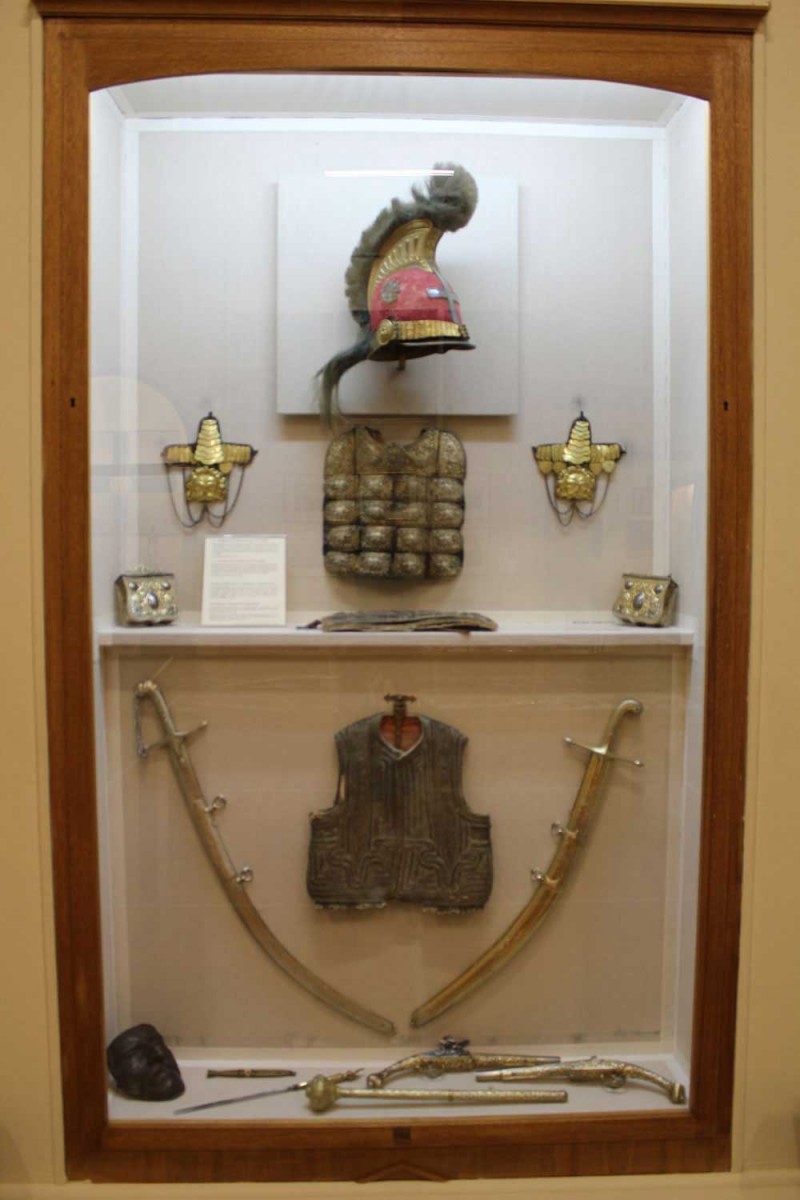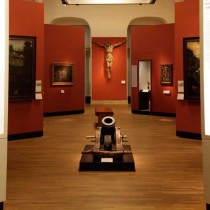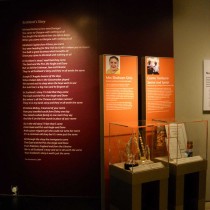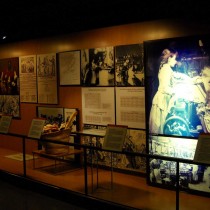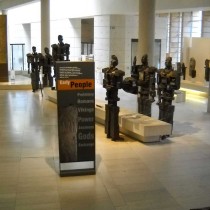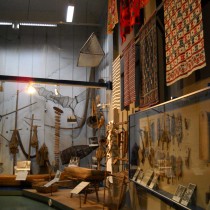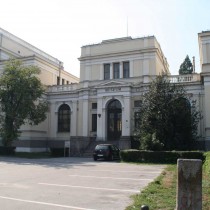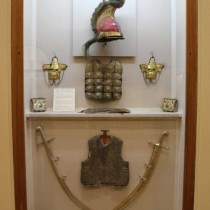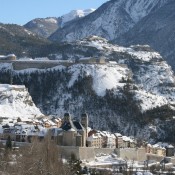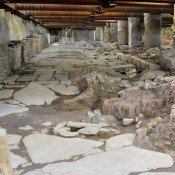The European research program EuNaMus (European National Museums: Identity Politics, the Uses of the Past and the European Citizen) was funded by the European Commission’s 7th Framework for Research in social economic sciences and humanities and took place between 2010-2013. The program involved the following eight universities from the same number of European countries: The University of Linköping in Sweden (project leader), the University of Oslo in Norway, the University of Leicester in the UK, the University of Paris II, Sorbonne in France, the Central European University in Hungary, the University of Bologna in Italy, the University of Tartu in Estonia and the University of the Aegean in Greece.
The program’s main target was to study and comprehend the national museums as cultural and political structures that are called on today not only to survive and to redefine themselves in a new social, political, economic and scientific context, but also to present the public with the changes taking place in this context both in Europe and globally.
The program had the following targets:
(a) To define the national museum in all its multiplicity, by the systematic, comparative study of the creation of national museums in the context of Europe’s overall cultural evolution.
(b) To study the historiographical practices behind the endeavor of national museums in presenting the past so as to shape collective awareness, concepts of community and “belonging” within both a national and European framework.
(c) To promote the material culture that unites and defines Europe, its common values and its particular nature.
(d) To reflect and encourage reflection on cultural policies and their application in national museums – in other words, to examine how national museums have acquired the role they have as social performers and who it is that determines this role.
(e) To explore the role of the European citizen as an active participant in creating a meaning to national museums.
(f) In short, to create flexible tools and knowledge to be exploited both by museum professionals who shape cultural policies and by the public, thus facilitating the function of museums as places for the exchange of dialogue on what is meant by belonging both to a nation and to Europe.
Given the breadth of the term “national museum”, in the program’s first phase we arrived at a definition that satisfied the research aims and allowed an overall study of the phenomenon. Thus, the term “national museum” was used as a broad term referring to collections and exhibitions that aim to present, to exhibit in detail, to express and negotiate dominant national values, the myths and realities of a national entity (Aronsson 2011).
At all stages, the research methodology was comparative, interdisciplinary and multidimensional. By focusing particularly on how cultural identity was expressed through national museums, the EuNaMus recorded similarities and differences in the European museum scene, seeking information on how Europe could develop in future and what the role would be played by cultural institutions in this future.
In the following sections I will briefly present some thoughts arising from the program’s research activities that relate to the present and future of European national museums. The outcomes of EuNaMus is available on the website http://www.ep.liu.se/eunamus/outcomes.html.
National museums as places for negotiating concepts, nations and identities
National museums take on many roles, they are influenced by the history of the nation to which they belong and they choose different approaches to the past. Their role can be dynamic as, for example, in cases where they undertake to express national groups even before these have been shaped into a national-state (see, indicatively, the Museum of Catalan History). On the other hand, their role can be passive and weak, as in cases where they cannot respond to the challenges of the times so as to fulfill the new and different needs of new states (see, indicatively, the National Museum of Bosnia-Herzegovina). More often, however, national museums assume the role of the official spokesman of the state’s perception of history and the past and express the country’s “grand historical narrative”. Thus the national museum becomes a place where perceptions and ideas become both stable and crystallized.
The role and activity of each national museum are obviously not constant, but change according to historical developments and the issues faced by the nation to which the museum belongs. Based on the comparative study of the history of national museums that took place as part of the program (see Aronsson & Elgenius 2011), three general classifications were distinguished, concerning the relationship between a national museum and the historic progress of the state to which the latter belongs:
(a) In the case of countries that have been empires in the past (e.g. Britain and France), the national museums constitute show places of cultural goods collected from that period. The cultural goods are exhibited as results of the triumph of science and the enlightenment while the dark aspects of racism and nationalism are thoroughly concealed.
(b) Great states that have been formed by mergers follow similar patterns (e.g. Austria, the Netherlands, Holland, Spain and Russia but also Britain and France that belong to the previous category). Major museums such as the British, systematically argue about their universal importance and their role as “global museums” in order to hold on to their artefacts which they collected by transporting cultural goods from different regions to the centre. Since many European countries have a colonial past, this argument is also taken up by other countries that do not fall under this category, as in the case of Sweden, for example, in order to keep their collections. On the other hand, countries such as Italy (as well as Greece) insist on the return of cultural objects to their place of origin and on the need to create national sets of cultural goods.
(c) The new nation-states, namely, those created after the collapse of empires and broader political formations, made up the great majority of European nations. Usually their national museums present a more coherent and focused history of their long term cultural progress. They use a common pattern in the development of their exhibitions: these usually have prehistory as a starting point and argue for preserving the continuity and coherence of the country’s cultural history, even in cases of political occupation by other countries. The more fragile the process was or is of forming a state, the greater the need for a coherent and clear argument for the existence of a historical community. This category includes countries each resulting from a different historical course: the integration of regions (e.g. Germany, Italy), the collapse of earlier empires (e.g. Belgium, Luxembourg, the Czech Republic, Hungary, the Baltic States and the Balkans), the liberation from colonial rule (e.g. Ireland, Malta, Cyprus, Iceland). The same category, however, includes nations that, at least so far, are not states, such as Wales, Scotland, the Lapps (Sami people) in Scandinavia, Catalonia etc. Old states that have changed into national states, (such as Portugal, Sweden, Denmark, Switzerland) can have a more relaxed attitude regarding a clear, strong argument in favour of historical continuity, since such arguments usually imply the presence of an adversary and indicate insecurity.
Of course these general principles are not absolute, although, on the one hand, they help us classify European national museums and, on the other, make us understand their narratives in some ways. From the moment the creation particularly of a national museum is the result of choices made by many different “perpetrators”, there is much room for distinctions. This is connected with specific historical, social, economic and political conditions, conflicts and disputes at a local level, the different pace of change for each nation-state, as well as different types of internal or external threats. Since a variety of forces activate themselves each time a museum is created, the results also vary. Thus, the creation of a national museum proves a complex activity in which many different parameters need to be taken into account.
One of national museums’ basic features is that not only are they established through a dynamic process but, moreover, they are asked to present the latter’s administration. In other words, they choose how to present history. Frequent strategic choices are the following:
(a) Silence: conflicts, questionable issues and alternative readings of the past and present are ignored and are not mentioned at all. This is a very basic and common tactic of national museums, disguised by “objectivity” and the responsibility of museums “not to take sides”. Despite declarations however, it is usually easy for an outside observer to distinguish the choices made each time and which are just as political and often more clamorous than whatever efforts at being objective. “Difficult issues” are included in the museum narrative, only when a strong social consensus is reached.
(b) “Orchestrating diversity”: In practice this means recognizing diversity, but absorbing complexity in a synthesis that strives to support “unity in diversity”. In these cases, the community of the national museum expands without an outside enemy being determined. In this way the national museum often seeks to express local and class differences; while often nowadays this integration frequently includes minorities, such as immigrants.
(c) An effort for life to go on in the aftermath of traumatic past events: in these cases, national museums openly touch on past conflicts and function as a tool for at least restoring moral order, alongside the legal and political system. The aim, in these instances, is to live with the past and a recognition of responsibilities for past actions of consequence to the present (for example, cases of minorities such as the Lapps as well as issues such as the Holocaust, the Irish question etc.).
(d) Maintaining a distance from the past to build up a new future: in these cases, the aim may be to get over the past or to construct a future that is not influenced by the past. Of course these cases are extremely difficult as no catharsis can be achieved without confronting traumas of the past. The black pages of the actual community’s history are the most difficult to confront in this issue. On the other hand, the attempt to create a “distanced history” either too quickly or through silence, makes the past return in an even more destructive manner (see, for example, the issues of repatriation as part of post-colonial relations, the Nazi occupation or Soviet rule).
(e) Representation aiming to activate the community: there is no lack, of course, of national museums that take a stand against still ongoing conflicts and share in political confrontations. In these cases both their physical integrity and reliability can be harmed.
The common language of European National Museums
Europe’s small size, its population’s great density and its long history of economic and political developments, have led to the formation of a great number of independent states, each of which strives to express its own identity. Nevertheless, European nations converse among themselves using a common language of architectural forms and material data. In fact through processes of competition and assimilation, they, the nations, have created a material language that indirectly defines Europe in cultural terms. These manners of expression are so deeply embedded in European culture that we often take them for granted. Today, the practice of loaning symbolic forms has spread this European language all over the so-called Western world. It is, nevertheless, a European language created by the special conditions of Europe, in the context of this continent’s historical evolution. This “common language” is not only expressed in the architecture of the national museums, but mainly in their context that is a synthesis of the following categories of objects: ancient sculptures and medieval triptychs, schools of European painting and fossils. These function together with the city’s architecture, the urban design and the monuments so as to speak about the nation. At the same time, however, they display their European character as being something compact and uniform.
In 1954, the Council of Europe recognized the possibility of using this common history of art to build up bonds between nations with big art exhibitions. In our time, these bridges between nations have an even greater variety, since Europe’s cultural production is thriving and is being expressed in multiple ways and on many levels.
Expression of national identity in art is constantly evolving. While older nations and former empires own a large number of works by great artists of the past, younger nations and those that had been under foreign rule such as, for example, Norway and Hungary, continue to display national artistic trends in their own national museums, completing and adding, in this manner, to the grand narrative of European art. Today, moreover, a wave of new modern art museums such as the MNAC in Barcelona or the Istanbul Modern in Constantinople, broaden the language of national expression. They become part of national museums’ ambition to express national identities that are liberal and internationalized.
The history of museum development, especially over the last decades, shows a strong desire on the part of local communities to develop their own narratives, contributing in this manner to national narrative. While national museums are often involved in an international language, and in the production of grand narratives and national images, local and regional museums tend to offer more complex narratives. For example, in Norway, difficulties arising from the geography and climate have led to the formation of strong local identities that, in turn, have influenced specific aspects of economic output, of intellectual and cultural evolution and have constituted multiple focal points for “national stories”.
Norway is proof that national social cohesion is built through strong local identities. Moreover, it contributes to the argument that museum evolution at a local level that is linked to a national feeling of “belonging”, offers the foundations for social cohesion all over Europe. Possibly, it would be overly optimistic to expect this to be achieved solely by national museums alone. The role, therefore, of regional and local museums proves to be equally important.
On the other hand, online communities that go beyond national borders and “build” web sites that resemble museums focusing on specific items, offer another model for building relationships between nations. These “grass roots” developments function without the interference of nation states or professionals. These are democratic museums in the way citizens are represented and participate in the creation of historical narratives by using material culture (or in this case by referring to it). All the same, their success in a complete museological result is not what it could be, and they do not succeed in exploiting their potential as tools of reflection and negotiation. Often the potential of these sites is not fulfilled and in connection with disputed areas (such as the Prespes, for example), the objects can constitute evidence and symbols of disagreement instead of consent. Nevertheless, with proper technological and scientific tools, it is possible to exploit a common interest in artefacts and monuments, so as to construct relationships with new communities and new resources (see also Knell et al. 2012). There is therefore scope to broaden both the role and the resources of museums.
National museums and museum politics
Since 1990, museum politics has constituted a field of discussions at multiple levels about national narratives and national perspectives of museums. Often, the need for change is referred to in these discussions. Political developments in Eastern Europe that coincided with big demographic changes in the West, have formed a new agenda on the use of culture and cultural institutions at a political level for the smoothing over or neutralizing of outcomes of change. The participants in the process of developing a museum policy are many and not always with a common view on the approach needed to be adopted. The politicians in European countries and of course the actual European Union play an important part, but museum politics are also influenced by other factors at a local, regional and often national level. Moreover, museum employees have an important role in the shaping of this policy although again with personal fluctuations corresponding to those of politicians.
National and international narratives do not easily co exist in national museums to a large degree because of the different utopian ideologies expressed by different political spokesmen in Europe. This survey used the concept of “utopia” to describe the constructions that have been created by the different cultural politics in Europe over the last two decades. The three following different categories of utopia:
(a) The utopia of the European Union: this approach is linked to the concept of the European citizen based on common values and the formation of a common European identity. In this utopia, the role of the museum is to contribute by being a reference point and securing a coherence that goes beyond the national limits. Many political factors and strategies seek this approach but its success is questionable. Surveys from countries such as Hungary and Estonia show that the EU has contributed to changes in national museum policy and practice by funding specific museum programs but, despite the changes in very particular practices, the rest of the field remains unchanged.
(b) A Multinational utopia: museum policy changes by giving a greater emphasis on cultural diversity and multiculturalism: In this case also we are faced by a utopia, at least as far as the big national museums are concerned. The museum collections and the history of these institutions is so closely connected to national narratives that their conversion into places either of dialogue or intercultural encounters becomes an extremely complex mission. Organizing periodic exhibitions or writing a new museum guide does not change the significance of institutional history and the history of collections that reflect national priorities. The success of periodic exhibitions or the organizing of public discussions have not yet been convincing at a wider level. This utopia’s most successful examples are found in Scandinavian countries with the inclusion of the Lapps in their historical narratives (e.g. the Nordiska Museet).
(c) The National historical utopia: At a first glance this seems to have lost its legitimacy over the first 20 years of European museum policy. Upon looking closer it becomes clear that there is not only “one” European national museum. The histories of European national museums are different. Examples from various countries studied during our survey show that the creation of national narratives is still productive in many countries that attempt to reevaluate the course of their history and become involved in reflection processes. In these cases, a combination of a national and European point of view is sought during the presentation of national collections. A typical example of this approach is the German Historical Museum in Berlin.
If we wish to sum up the issues of European museum policy that remain open or are still in progress, we can highlight the following:
-Museums tend to try making the transition from the nationalistic/national approach to that of the multicultural and cosmopolitan.
-Concern is developing regarding the relations between state and museums and models are being examined of management and operation distinguishing them (mainly in the context of the economic crisis of recent years).
-A development model for museums is being sought that more actively will take into consideration the views and ideas of citizens and local societies.
– All the above are not adequately supported because both the academic and museum community appear to be fragmented (See also Eilertsen & Amundsen 2012).
National Museums and the Public
The public taking part in our survey (almost 5,000 questionnaires, 166 interviews and 22 participants researching small target groups in nine European museums) expressed its great trust and appreciation of national museums that, in the eyes of the citizens, are organizations of great authority. They mentioned that they expect museums to inform and educate them and their children, to help them form opinions on the nation/state whether they belong to it or are visitors.
It seems, therefore, that the public was not ready to question national museums or the truth expressed by them. This is a very positive result for museums while it explains at the same time the fact that it is very difficult for a museum to reach new groups in the public and respond to contemporary challenges. In other words, it also explains the difficulties of museum cultural politics.
The experiences of members of minorities that took part in our survey differed quite a lot in each case. What they had in common, however, was the realization that national museums play an important role in highlighting issues of identity and in recognizing the role and the services offered by minorities to society as a whole. Personal and national identities form a complex network of relationships for the minorities that associate with dominant groups in a society. Many of them expressed their feelings of exclusion and the lack of understanding on a daily base. Furthermore, although many members of minorities have a very strong feeling of their identity, because of their origins and the cultural or national group to which they belong, this identity is rarely recognized by the dominant community. Some of the participants believe that their identity will always be “between two worlds” and therefore they will feel permanently isolated.
The members of the minorities we spoke to share the views of the rest of the visitors and believe that national museums are very important institutions, able to present the complexity and diversity of nations by transmitting life stories and experiences of individuals and groups both from history and today’s realities. Minorities are also very valuable because they transfer knowledge of cultural heritage to the younger generations. They want to be recognized both as individuals and for their services to the nation and to Europe. Consequently they believe their representation also in national museums to be important and necessary in exactly the same way and reason desired by other social groups:namely, their role’s recognition in society and the education of younger generations.
Our survey led to the conclusion that national museums still face many challenges regarding communication with the public. The most important of these however is the following: A balance should be found between tradition and the challenges of modern society, knowledge and politics, autonomy and the relationship with the state. Last, the most important is to ensure that the national museum continues to concern all citizens, including all of them and so becomes a legitimate representative of modern nations (see also Bounia et al. 2012; Dodd et al. 2012).
In Conclusion
National museums provide society as well as the political system with evidence of a common history and a tradition of government as well as values: consequently it must be considered that they provide a foundation for the development of societies. They should be respected for their role, supported and studied. There are still many challenges regarding the future which, however, should be recognized while, at the same time, the history and role played by museums should be the object of reflection and systematic study.
Alexandra Bounia
Associate Professor at the University of the Aegean
